Unter den Riesinnen
Peter Kozek
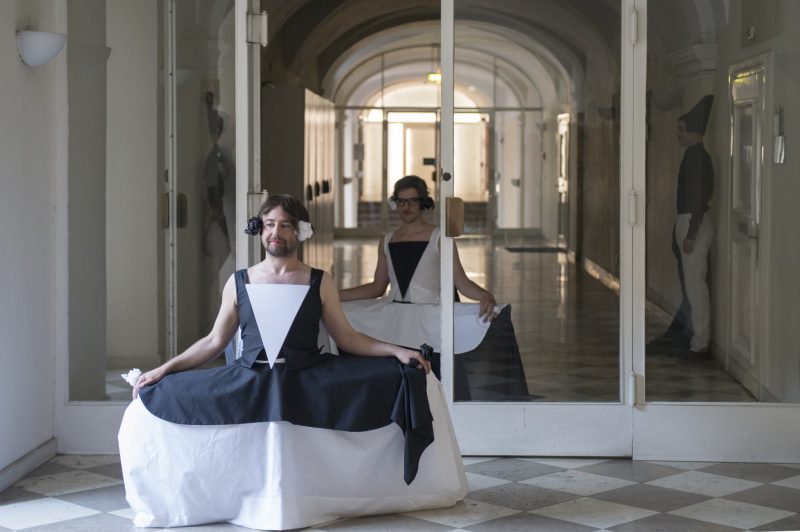
On the level of K2– according to the restoration report demanded by the Office for Public Monuments before conversion of rooms in the Hofburg Innsbruck into the Neue Galerie–Schweinfurt green from the Biedermeier period was found: a beautiful, bright, light-resistant shade of green–the pigments of which, however, are extremely poisonous, as it is a double salt compound containing copper and arsenic. A starting point. Directly above the rooms on ground level, on the second floor, there is the Riesensaal (great hall) with portraits of Empress Maria Theresia, her husband and their many children–more girls than boys. At that time, during the Baroque–as now–the women appeared very impressive with their huge hooped skirts. Unter den Riesinnen (Among Giantesses), however, not only refers to the huge hall with the portraits of ladies in their mega-voluminous robes. Peter Kozek also wishes to pay tribute to those women artists who are his role models, to join their ranks and subordinate himself to them, albeit also in a jesting manner. His great women include Louise Bourgeois, Joan Jonas, Marina Abramovic, Friederike Mayröcker, Brigitte Kowanz and Jakob Lena Knebl. The artist digs into his own biography as well, and like an archaeologist or a restorer he unearths his own career. Works are taken up again more than a dozen years after their genesis, and set into an extended context. In 2016 the participative XL-series Draw Me A Cat has gained political explosiveness alongside a subtle psychological level, and the Contributions to the Universal Memorybank / Gesänge (Songs) not only suggest, like notations, a proximity to music but again point to the Baroque, where almost minimalist repetition and opulence, science and mysticism did not exclude one another. Starting out from the specifics of the location, Peter Kozek interweaves these many layers into a spatial installation in “total look”, into a synthesis of the arts in which his long years of collaboration with Thomas Hörl–the performance duo kozek hörlonski was founded in 2003–cannot be omitted. The relics from their opening performance SKANDALFRISUR (SCANDALOUS HAIRDO)–the wigs made from the two artists’ own real hair and the costumes–are key objects among the great women.
The opening evening: the guests for the vernissage begin to arrive. The gallery is closed. Only the 550 pictures of cats, which were drawn for the exhibition by fellow artists, friends, those currently living in the HERberge der Barmherzigen Schwestern in Innsbruck, people who are taking care of the refugees on a voluntary basis, and by Peter Kozek himself, can be seen as a video in the display window. Cats stand for the unconscious and the uncanny, but also for comfort and cuteness. Online and above all in social networks, they have become the counterpart to hate postings. When terror suspects were assumed to be in Brussels after the attacks on the Paris music club “Bataclan” in November 2015, the authorities requested the public not to post about deployments and so hinder enquiries, or give the perpetrators information in this way. The social media communities reacted with pictures of cats, posting masses of cats in the struggle against the terror. The innumerable associations made with cats are obvious in the wealth of drawings.
After the opening speeches in the corridor leading to the gallery, a curtain is cut open to reveal a view of the performers kozek hörlonski. As small as children, they are wearing huge dresses that extend on each side, reminiscent of “Las Meninas” by Velázquez, but also of the portraits of the Empress Maria Theresia and her daughters in the Riesensaal two floors above the gallery rooms. On their knees, they progress before the audience. The wigs–Thomas Hörl is wearing Peter Kozek’s hair and vice versa–are powdered, and the artists are the first to enter the exhibition.
The design of the walls echoes the graphics of the robes. The walls are divided into black, white and grey triangles, which dynamizes the sequence of rooms. The source of inspiration was Baroque illusionary painting in general, and the design of the floor in the Riesensaal in particular. A selection of cat drawings are hanging in the first room of the gallery, all of them in black, white and grey. In addition, there are two pedestals positioned here, with wooden heads for wigs, onto which the hair-pieces of kozek hörlonski will be placed after the opening evening. If we adopt a specific viewing angle, the two pedestals seem to disappear. This so-called anamorphosis is another reference back to the age of the Baroque. By means of this technique it is possible to outwit the eye and question reality. The work Cu(CH3COO)2 – 3 Cu(AsO2)2 in the passageway to the next room is almost invisible. Through a spyhole we can see a little bottle of green pigment between the gallery wall at the front and the orignal wall of the Hofburg. Is it the poisonous Schweinfurt green mentioned in the restoration report? It is certainly an indication of the concrete history of the rooms that now house the Neue Galerie. It can be dangerous to penetrate into deeper layers.
The sheets Contributions to the Universal Memorybank / Gesänge (Songs) also emerge layer by layer, line by line. By contrast to the cat pictures and their participatory starting point, this series of ink drawings represents a secluded, almost meditative studio project. In the places where the artist’s hand held the ruler on the paper or lay on the paper while drawing, the ink is less distinct later. Abstract, poetic drawings evolve, looking according to Peter Kozek “as if ‘the hands of spirits’ were striking the strings of musical instruments”. Well-composed, they interact with the precise design of the walls.
The final room accommodates the boudoir, the dressing room. After the performance the costumes will be shown here. However, they will be inverted and the paniers (French: baskets) that lend volume to the extensive robes will hang in front of the dresses, surprising visitors as black and white drawings in space.
A view of the deep window ledges leads us back to the great women. A poem that Peter Kozek has arranged in coloured pigments, made from text fragments about the women artists who are his role models as well as quotations from the women he admires, is scattered in the transitional area between interior and exterior. In this setting it could be read as a fleeting reference, a footnote, but it is the focal subject of the flyer published for the exhibition. This small but excellent publication functions in a similarly multilayered way to the show itself. There are three existing variations and it is possible to supplement it with photos and texts, in a comparable way to a sticker album. The difference to a collector’s album is that it can be designed individually.
With Unter den Riesinnen (Among Giantesses) Peter Kozek creates a dynamic sculpture in space, which obliquely ties together its multiple references, starting out from the genius loci and moving via reflection on his own biography as an artist to current political events and gender issues. He writes an open dramaturgy, bringing together different aspects, elements, components, materials and working methods–and by this means he recounts stories in space.
Ingeborg Erhart
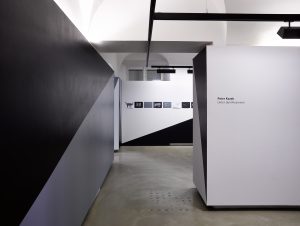
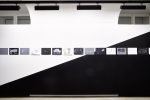
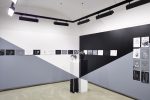
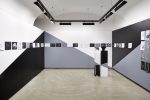
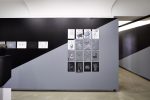
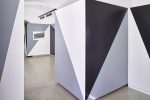
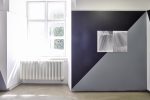
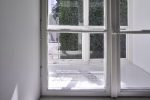
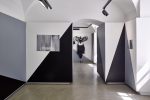
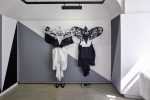
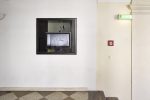
Ingeborg Erhart